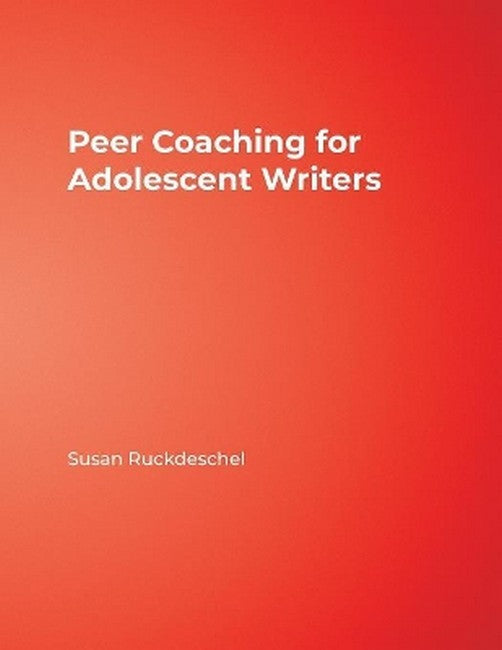As a reading specialist, Susan Ruckdeschel pioneered many school and district writing initiatives, beginning in 1991 with the school's first school writing club in the Naples Jr./Sr. High School in the Finger Lakes Region of New York state. It was the breeding ground for the student peer coaching model used in her book Peer Coaching for Adolescent Writers, quickly expanding to other districts both inside and outside of classroom instruction to include the Glens Falls Middle School in Glens Falls, NY; The Booker T. Washington High School in Norfolk, VA; and the Hawthorne PEARLS School in Yonkers, NY. Ruckdeschel is completing a doctoral program in educational leadership at the University of Phoenix, with a focus on curriculum and instruction. She holds several NYS teaching certifications, including Reading K-12, English 7-12, Classroom N-6, School District Administrator, and Gifted and Talented Extension. Ruckdeschel has taught and operated within each of these certification areas throughout many years of teaching and consulting in public schools for organizations, including the National Urban Alliance, Pearson Learning Group, and Houghton Mifflin. As founder of Literacy Solutions, she consults in districts throughout the country on curriculum and professional development, while teaching as adjunct instructor at the University of Phoenix Online. Ruckdeschel continues to maintain ongoing writing workshops for student writers in the Mid-Hudson Valley region of New York state, training them to be effective peer coaches while nurturing their budding writing efforts. Ruckdeschel graduated from Nazareth College of Rochester in 1991 with a Masters of Science in Education.
Request Academic Copy
Please copy the ISBN for submitting review copy form
Description
List of Figures Foreword Acknowledgments About the Author Introduction: Helping Adolescents Take Responsibility for Their Writing Part I. The Model 1. Student Roles and Steps of Peer Coaching: What They Look Like in the Classroom 2. Silent Peer Coaching and Peer Coaching as Questioning 3. Scaffolding Responsibility to Adolescent Writers 4. Facilitating and Assessing the Program Part II. The Model in Action 5. Step One: Establishing Goals and Issues 6. Step Two: Summarizing, Reading, and Listening 7. Step Three: Giving and Using Feedback Part III. 36 Reproducible Tools for Implementation and Assessment Conclusion: Helping Adolescent Writers Find Their Voices References Index
"Susan Ruckdeschel provides a clear rationale for having student writers coach each other as they revise their work. Her explanations, examples, practical tips, and reproducibles enable teachers to use the process successfully in their own classrooms. This peer review process is straightforward, engaging, and flexible, and aims to develop students' independence as writers." -- Denise Nessel, Education Consultant and Mentor "Ruckdeschel's protocol for peer coaching is an excellent tool for improving student writing, speaking, and listening skills, as well as promoting positive peer social interaction. As a middle school English teacher, I am very interested in incorporating the peer coaching protocol into my own classroom writing instruction." -- Tracy Taylor Callard, English Language Arts Teacher "Ruckdeschel has done an exceptional job of breaking down the steps of the peer coaching process. She has anticipated readers' questions and offers a thorough handling of the topic." -- Barbara Smith Chalou, Professor "Teachers need to think about teaching writing with this sort of process. There is so much more to writing than 4 or 5 paragraphs strung together with correct spelling, grammar, and punctuation. If teachers knew a better way to run their writing class, they would do it. This book might be the fuse that starts the fire." -- Denise Carlson, Third-Grade Teacher "Helps teachers be better writing instructors and make writing an engaging and meaningful activity in their classrooms." -- David Callaway, Eighth-Grade Language Arts Teacher

